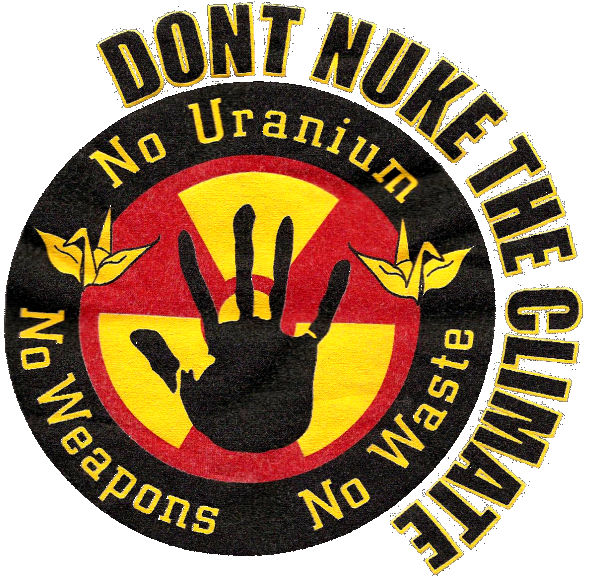 The origin of Britain's civil nuclear programme is closely linked with nuclear weapons. The first reactor - the "Windscale Piles" at Sellafield, began producing plutonium for nuclear weapons 1950. Britain's first commercial reactor - Calder Hall at Sellafield - was a dual-purpose reactor, with the main purpose being the production of plutionum for Britain's nuclear weapons. The same applies to the second commercial reactor at Chapelcross.
The origin of Britain's civil nuclear programme is closely linked with nuclear weapons. The first reactor - the "Windscale Piles" at Sellafield, began producing plutonium for nuclear weapons 1950. Britain's first commercial reactor - Calder Hall at Sellafield - was a dual-purpose reactor, with the main purpose being the production of plutionum for Britain's nuclear weapons. The same applies to the second commercial reactor at Chapelcross.
Later reactors were primarily built for the production of electricity, and in April 1995 the UK Government announced that all production of plutonium for weapons purposes had ceased.
At its peak in 1997, about 26% of Britain's electricity was generated by nuclear power. This has now gone down to less than 20%, and only 16% in 2009.
At present, the government wants to build new nuclear power stations at eight sites - all of which are existing nuclear sites. However, opposition to nuclear power is again growing. This website provides information for the growing anti nuclear power movement in Britain, with a special focus on nonviolent direct action against nuclear power.
Recent posts
2 Aug 2013 - 17:41
This weekend, exactly one year ago, Kick Nuclear began a
weekly Friday morning picket outside the Japanese Embassy in
London in solidarity with anti-nuclear protestors in Japan
demanding an end to nuclear power there in the light of the
Fukushima Disaster of 2011. Japanese people living in London
have taken part every week in this London picket.
The anniversary was not marked by any form of celebration, in
view of the fact that the disaster at Fukushima continues, and
indeed worsens.
Rather than celebrate this anniversary, Kick Nuclear will
6 Jun 2013 - 16:09
Fukushima Update, Summer 2013
2 ¼ years after the triple meltdown at Fukushima, things are sliding ever faster downhill over there.
20 May 2013 - 15:20
On morning of May 14th Kick Nuclear activists leafleted the
civil servants and government advisers who work at DECC [the
Department of Energy & Climate Change] about the high cost
of new build.
On the morning of May 15th leaflets were handed out to the civil
servants and government advisers who work in the Treasury.
Both the Secretary of State at DECC ( Ed Davey ),
and the Chief Secretary to the Treasury ( Danny Alexander )
were seen to be reading the leaflets,
as were many of those who work in these two government
departments.
Here is a copy of the leaflet: -
8 May 2013 - 14:17
The Australian Conservation Foundation have just published a new report upon the effects of Uranium mining.
Yellowcake Fever:
exposing the uranium industry's economic myths.
In the Executive Summary it states:-
'The Australian uranium industry involves serious and unresolved domestic and international security, environmental and inter-generational concerns and
remains a contested and controversial sector that lacks a secure social license.'
A full copy of the report can be found at: -
30 Mar 2013 - 14:43
This Tuesday, 2nd April 2013, london anti-nuke types will demonstrate at the Treasury from 08.30 till 09.30 in solidarity with the Treasury and its hard line in the negotiations with EDF over the nuclear electricity strike price. The text of their flyer to Treasury workers follows.
Hold The Hard Line, Treasury.
We stand here today in solidarity with the hard-pressed Treasury and its
hard line in the negotiations with E.D.F. over subsidies and the strike price
for nuclear-powered electricity. Only the level-headed realism of the
19 Mar 2013 - 12:34
This morning activists from Kick Nuclear distributed Boycott EDF postcards and the Spring edition of Fukushima Update to staff at DECC [ Department of Energy & Climate Change ] as they went into work.
Veteran activist Martyn Lowe commented: ‘ It was really encouraging to see just how many DECC staff took the items and read them. It is to be hoped that they now act upon this information’
An announcement about the future of the UK nuclear industry is expected within the next 24 hours.
8 Mar 2013 - 21:02
From Kick Nuclear:
Japanese and British campaigners will march together in London this weekend to warn about the dangers of nuclear power in Japan, the UK and worldwide.
1 Mar 2013 - 16:26
As we pass by the 2nd anniversary of the March, 2011 Fukushima nuclear disaster, here is our 2nd update, written in
February 2013, from London's 'in front of the japanese embassy every Friday' posse. (9am till 1pm.)
The three melted-down nuclear reactors on Japan's Pacific Ocean coast sit slumped down in and under their metal
bottles, like 3 angry little dragon's eggs, dribbling and belching their poisonous slime and vapours. Occasionally, it
seems, they stir restlessly, re-starting fission. (They keep detecting Xenon 135, which has a half life of 5 days so
 The origin of Britain's civil nuclear programme is closely linked with nuclear weapons. The first reactor - the "Windscale Piles" at Sellafield, began producing plutonium for nuclear weapons 1950. Britain's first commercial reactor - Calder Hall at Sellafield - was a dual-purpose reactor, with the main purpose being the production of plutionum for Britain's nuclear weapons. The same applies to the second commercial reactor at Chapelcross.
The origin of Britain's civil nuclear programme is closely linked with nuclear weapons. The first reactor - the "Windscale Piles" at Sellafield, began producing plutonium for nuclear weapons 1950. Britain's first commercial reactor - Calder Hall at Sellafield - was a dual-purpose reactor, with the main purpose being the production of plutionum for Britain's nuclear weapons. The same applies to the second commercial reactor at Chapelcross.